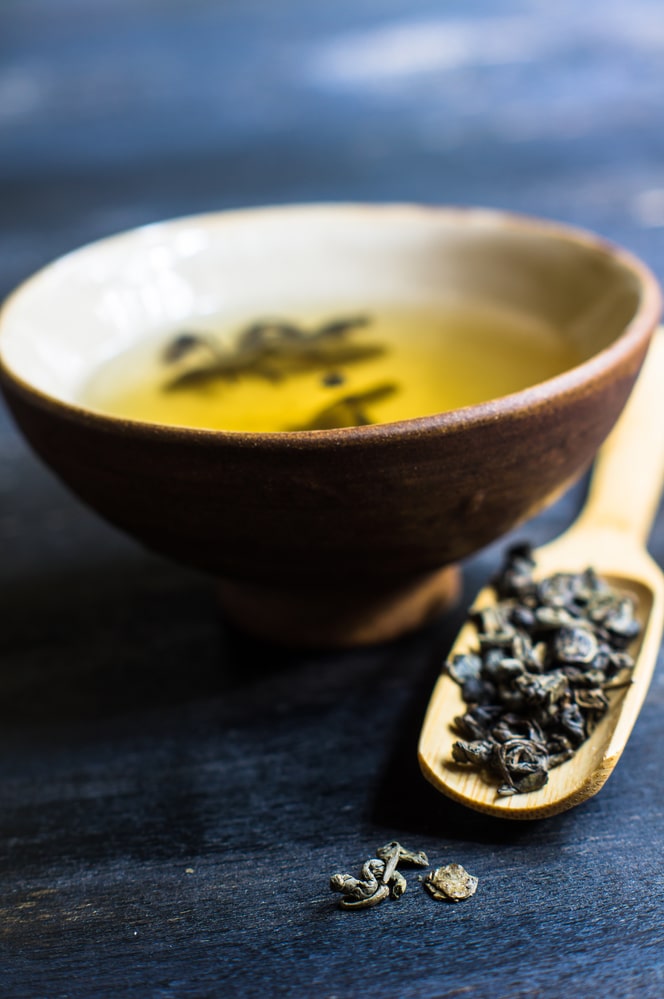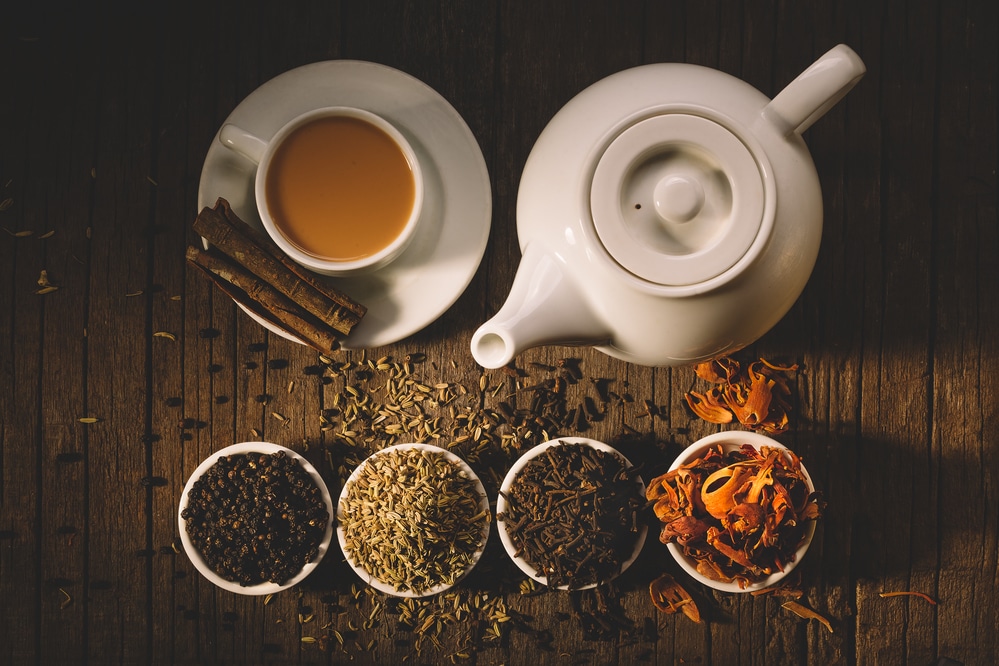Tea is the second most popular beverage in the world. Water is first, and is the essential ingredient in brewing the perfect “cuppa.” There are black, green and white teas, but all are from the Camellia Sinensis plant. The difference in each comes from the process they go through to take it from plant to cup. Tea’s many flavors depend on where it is grown, at what elevation, the minerals in the soil, and how it is processed.
The naturally occurring compounds in tea may help to maintain and promote good health. The consumption of tea can be a positive, proactive approach to a healthier lifestyle.
Tea has less than half the caffeine of coffee, but has the ability to relax, boost your mood and stimulate you all at the same time, giving mental clarity and better focus. Although it is not a cure-all, it has been known to have an effect on some diseases. Research is continually revealing information about the benefits of tea. I think of drinking tea as preventive medicine. It has been said to give protection from ailments ranging from osteoporosis to cancer prevention. Tea also has a naturally occurring fluoride that supports healthy tooth enamel. My local news channel recently suggested gargling with green tea as a flu precaution!
I usually drink up to four cups a day. I start with a good Irish or Scottish tea first thing in the morning and may switch to something lighter like a Darjeeling in the afternoon. In the evening I enjoy a “nightcap” of an herbal chamomile tea shortly before bed.
To prepare tea, bring water to a boil and pour over the loose tea leaves. I use a fine mesh infuser that fits over teacup or teapot and allows the tea to ‘dance’ around as the leaves unfurl and extract the wonderful flavor. Let it brew between 3 or 4 minutes. Do not overbrew. If the tea is brewed over 5 minutes it can become bitter. Black teas are enhanced with the addition of whole milk and a bit of sugar for sweetener. It is best to enjoy green tea without adding anything to it initially so you can appreciate the full flavor of the tea itself first. Lemon and honey can be added to green tea, but never add milk. If I want a second cup I just add a ¼ teaspoon of tea to the infuser with leaves from the first brew, and mix them in before pouring the hot water over them again. It is a very economical beverage.
Words sometimes tossed around regarding tea and what makes it so healthy are:
- Flavonoids – naturally occurring compounds that are believed to have antioxidant properties
- Antioxidants – needed to neutralize free radicals before they can harm the cells and tissues of the body
- Free radicals – can damage tissue and cause the body to breakdown on the cellular level
- Polyphenols – help lower risk of some diseases and have been found abundantly in tea. An example would be tannins, which give tea its color.

Tea is used in many different ways other than just for drinking. In grocery stores I have seen leaves used as a rub on meats and marinades. Lapsang souchong tea has a smoky flavor and can be brewed and used for basting roast duckling, giving it a beautiful mahogany look. Russian caravan also has the smokiness to it.
Jasmine tea can be substituted for water when cooking quinoa or rice. It has a slight floral scent and adds a pleasant taste. Earl Grey, with bergamot citrus notes, can be added as a flavoring to crème brulee and whipped ganache. It is now even being used in a “mar-Tea-ni”! If dieting, tea can be a healthy choice of beverage as it is calorie-free and sugar-free. There are so many flavors that can be added to tea it can even be a substitute for dessert. I’ve had a black chocolate mint tea and a gingerbread tea that were yummy and satisfying. There are many others that are infused with fruit flavors.
Matcha tea is a green tea that processes the entire leaf into a powder so one can get the benefit of all that chlorophyll: it packs quite a punch! It can be served hot or is very refreshing when iced. There is a special bamboo whisk used to bring out the delicate flavor and make it frothy.
Iced green tea is good to bring to the gym instead of water for an extra boost during your workout or if you are biking. Zinc and calcium are found in tea, as well as vitamins B and C.
Herbal teas or tisanes have their own specific category. People from all parts of the world have been blending herbal concoctions for drinking and cooking for hundreds of years. One favorite is mint tea, used to help with digestion after a large meal. Rosemary has been touted as a tea useful for memory.
Lotions and salves for beautiful skin have been made from calendula, and drinking the tea will offer the same benefits. You can combine two herbs or more such as chamomile, peppermint and spearmint for a refreshing and relaxing tea. The possibilities are endless, and only limited by imagination.
Herbal teas are generally brewed a minimum of 5 minutes and up to 10 minutes to extract the full flavors. My cold-remedy tea is a cup of boiled water, juice of half a lemon, a thin slice of ginger or 1/8 teaspoon dried ginger, just a pinch of cayenne and 1 teaspoon of honey. Mix all together and sip. Stir this each time before you sip so you don’t get all the cayenne at the end of the cup. This is very soothing and tastes good, too!
I am not a doctor and I am not offering medical advice. My hope is that you will feel inspired enough to enjoy many cups of this wonderful beverage and determine your own favorites. ![]()
